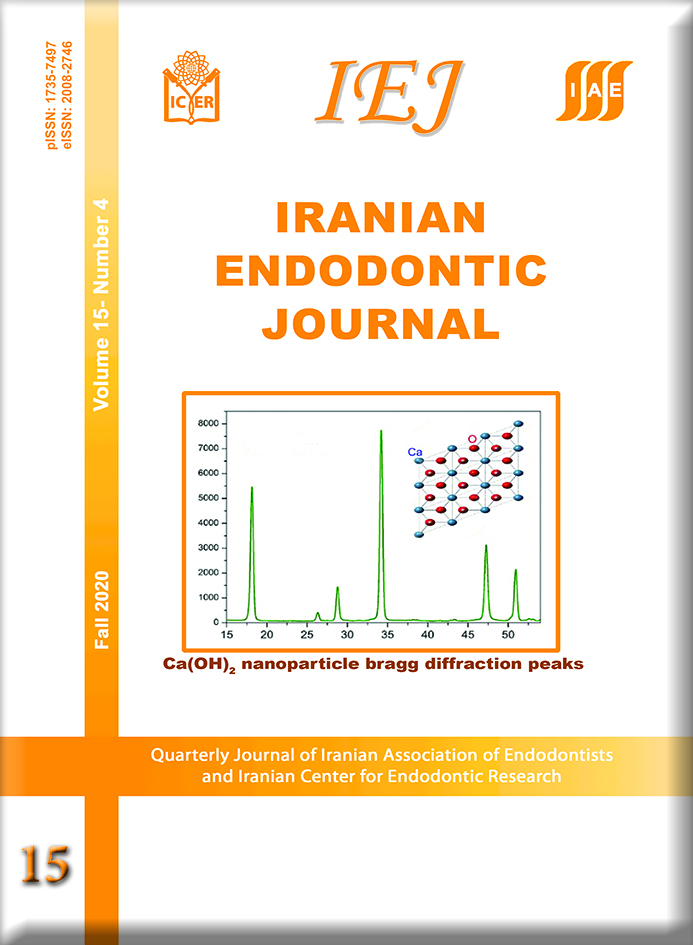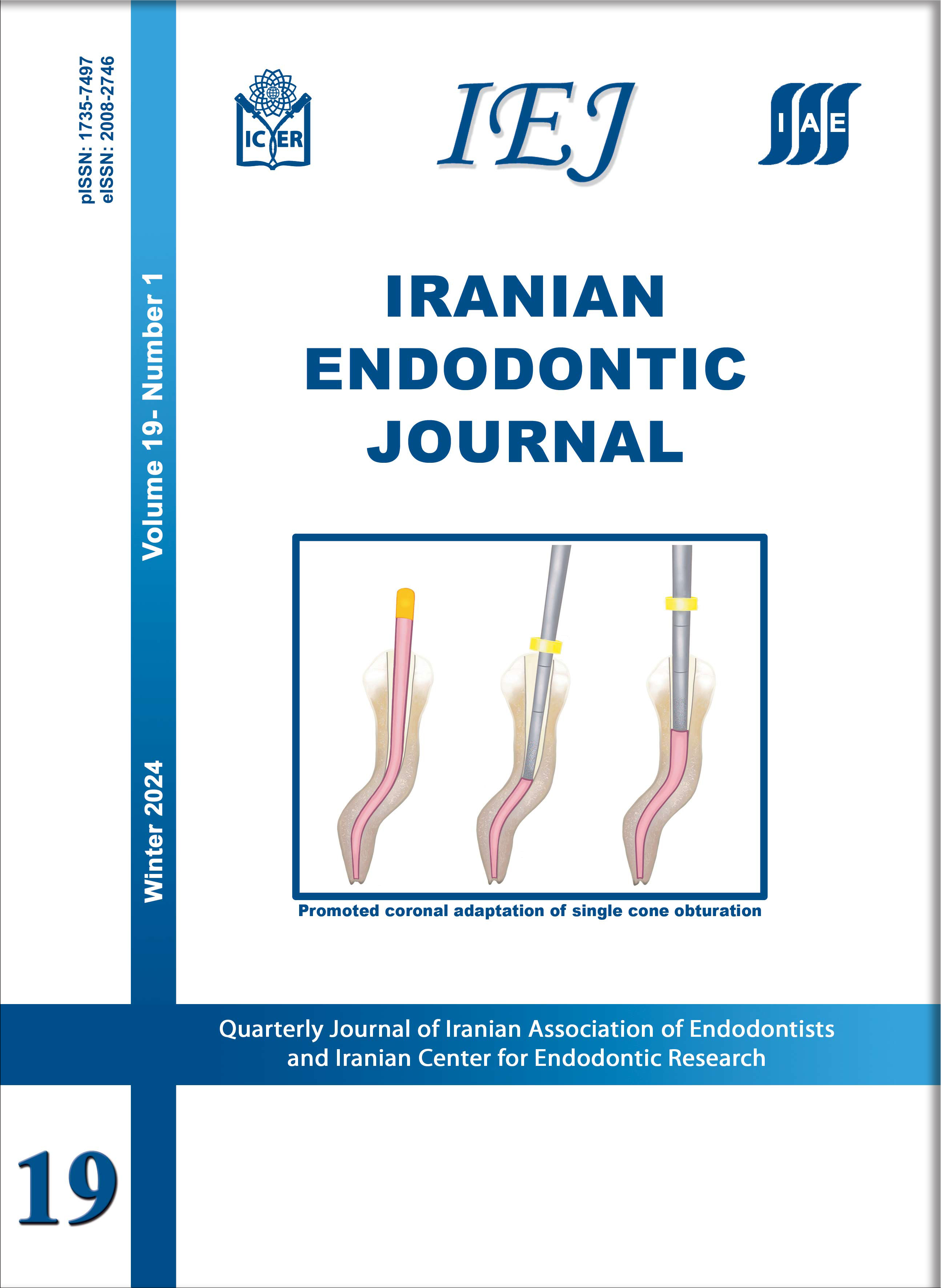The Effect of Reciprocating and Rotary Systems on Postoperative Endodontic Pain: A Systematic Review and Meta-analysis
Iranian Endodontic Journal,
Vol. 15 No. 4 (2020),
10 October 2020,
Page 198-210
https://doi.org/10.22037/iej.v15i4.23778
Introduction: The objective of this study was to evaluate the influence of the instrumentation kinematics on endodontic postoperative pain. Methods and Materials: PubMed, Scopus, Web of Science, Lilacs, Cochrane Library and the System for Information on Gray Literature in Europe were searched electronically without time or language limitations up to June 2020. Subsequently, data extraction, quality assessment and meta-analysis were conducted. The meta-analysis was performed using random-effects inverse-variance methods, and heterogeneity was tested using the I2 index (P<0.05). Results: A total of 318 articles were successfully identified in the search. Sixteen studies were used in qualitative synthesis and fourteen used for quantitative synthesis. Meta-analysis showed that patients treated with reciprocating system had lower risk of pain 48 h after endodontic treatment (Risk ratio [RR]=1.04, 95% Confidence interval [CI]=1.01-1.06, P=0.003) (I2=0%), but the mean postoperative pain for the reciprocating system was greater 24 h post endodontic treatment (Standardized mean difference [SMD]=0.25, 95% CI=0.06 to 0.44, P=0.01) (I2=43%). Other time points presented similar rates of postoperative pain (P>0.05). The certainty of evidence ranges from very low to high. Conclusions: The rate of postoperative endodontic pain was low, and reciprocating systems evoked more pain within the 24 h interval. Overall, the incidence and level of postoperative pain did not vary between reciprocating and rotary systems. There is no consensus if there is a relationship between the kinematics (rotary and reciprocating) and the incidence of postoperative pain.




